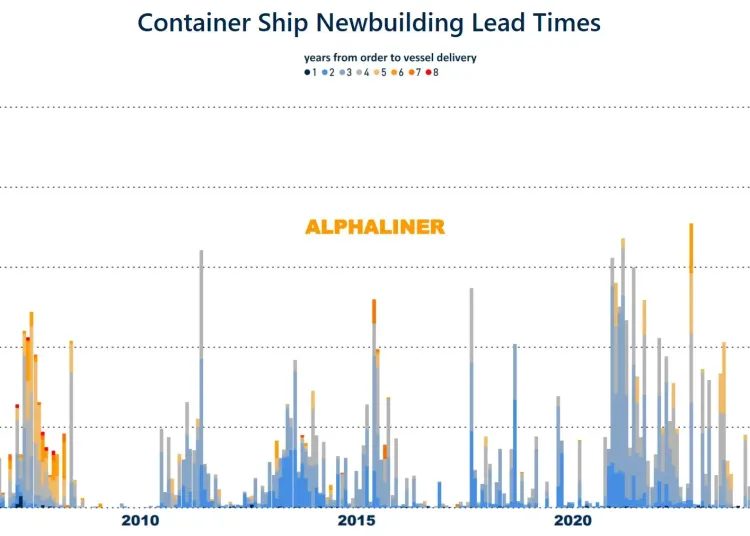The global container ship orderbook has reached an unprecedented size of 9.1 million TEU (Twenty-Foot Equivalent Units) this month, with nearly 800 new vessels in the pipeline, according to Alphaliner.
With the world fleet consisting of approximately 7,300 vessels and 31.9 million TEUs in capacity, the current orderbook accounts for nearly 29% of the total fleet.
Despite this record-breaking figure, carriers and non-operating owners remain eager to expand their fleets with new vessels. Alphaliner reports that a significant number of newbuilding deals are still under negotiation, including several large orders for major liner vessels.
Two primary factors are driving this surge in ordering activity. First, the industry’s urgent need to replace older ships with more energy-efficient and environmentally friendly vessels is pushing demand. Second, the extended lead times for container ship production are a critical factor. Today’s super-long lead times mean that orders placed now won’t be delivered until as far out as 2030 – five years from now.
Alphaliner also highlights that, while the orderbook is larger than ever in terms of total capacity, it is stretched out further than before, with many ships scheduled for delivery beyond the usual timeframe. For instance, some of the ships currently on order won’t be delivered until 2030, a delay that reflects the significant backlog in the industry.
The shortage of available slots at top-tier shipyards is another contributing factor. With many of these shipyards already fully booked through the end of the decade, roughly one-third of the current vessel order book is for deliveries beyond three years. This means that many ships that would typically be ordered in 2026 for delivery in 2029 or 2030 are already on order, highlighting the growing pressures on shipbuilding capacity.
In parallel, the U.S. Trade Representative (USTR) has proposed a new measure aimed at Chinese-built vessels. One key point of the proposal is a $1.5 million fee per port call for any container ship built in China, regardless of ownership or flag. While public comments on this proposal are open until March 24, it’s worth noting that 37.8% of the current active container ship fleet was built in Chinese shipyards.
Alphaliner also reports that the current container ship orderbook, which includes nearly 800 vessels with a combined capacity of over 9 million TEU, has more than 70% of its orders placed with Chinese shipyards. Seven of the world’s top 10 shipyards, in terms of vessels on order, are located in China.
As the industry faces mounting pressure from extended lead times, evolving trade policies, and a push for greener vessels, the global container shipping sector is navigating a challenging yet transformative period.




